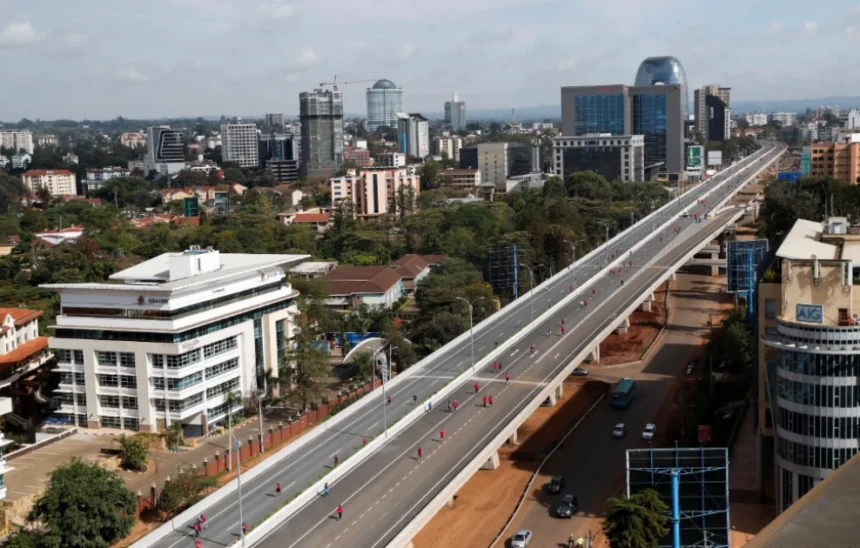When President William Ruto announced his new long-term plan, Vision 2055, which aims to transform Kenya into a first-world nation within the next 30 years, it sparked a familiar national debate: what ever happened to Vision 2030?
Unveiled in 2008 under the late President Mwai Kibaki, Vision 2030 was crafted as a roadmap to turn Kenya into a “newly industrializing, middle-income nation” by that year.
But with just five years left on the clock, the question remains: how much of that grand vision has actually been accomplished? And does the new plan mark a bold new direction, or is it simply the quiet abandonment of an old dream?
The Three Pillars of Vision 2030
Kenya’s Vision 2030 was anchored on three key pillars designed to spur social, economic, and political transformation.
- Economic and Macro Pillar: Moving the economy up the value chain
When research teams analyzed over 20 sub-sectors in 2006/2007, they identified six priority areas expected to deliver a 10 percent Gross Domestic Product (GDP) growth. These included tourism, agriculture and livestock, wholesale and retail trade, manufacturing, financial services, and business process outsourcing (BPO) and IT-enabled services.
Over the years, flagship projects such as the Bottom-Up Economic Transformation Agenda (BETA), the Standard Gauge Railway (SGR), the Lamu Port Project, energy expansion initiatives, Huduma Centres, and improved electricity access have sought to drive growth.
Yet, despite these efforts, Kenya’s economy remains far from realizing its full potential. High inflation continues to crush households, industrialization is sluggish, manufacturing contributes less than 10 percent to GDP, and both national debt and unemployment remain stubbornly high.
According to the Central Bank of Kenya’s Weekly Bulletin of October 9, the national debt stood at Ksh.11.81 trillion as of June 2025. The Kenya National Bureau of Statistics (KNBS) 2025 Economic Survey reported that GDP grew by 4.7 percent in 2024, down from 5.7 percent in 2023.
Agriculture, forestry, and fishing expanded by 4.6 percent, compared to 6.6 percent in 2023, while financial and insurance activities grew by 7.6 percent. Transportation and storage grew by 4.4 percent, and real estate by 5.3 percent.
However, the construction sector contracted by 0.7 percent, a reversal from 3.0 percent growth in 2023. Mining and quarrying also recorded a sharp 9.2 percent contraction, up from 6.5 percent in 2023, largely due to reduced production of key minerals such as construction materials, titanium, salt, and gemstones.
- Social Pillar: Investing in the people of Kenya
This pillar envisioned improved quality of life for all Kenyans, through better education and training, healthcare, water and sanitation, housing, environmental management, and support for youth, women, sports, and culture. It also emphasized inclusion for marginalized communities and persons with disabilities.
The government has attempted to strengthen this pillar through Universal Health Coverage (UHC), the Social Health Insurance Fund (SHIF), the Affordable Housing program, and reforms in Technical and Vocational Education and Training (TVET) institutions.
However, implementation has faced sharp criticism. Many Kenyans argue that these programs fail to adequately address the needs of low-income households in terms of accessibility, affordability, and sustainability.
Under the Social Health Authority (SHA), healthcare costs remain crippling, and the education sector continues to struggle with rising school fees at both tertiary and university levels.
The Gen-Z protests of 2024 and 2025 reflected the growing frustration among young people who feel that the government’s “bottom-up” slogan has quietly flipped into an “up-bottom” reality.
- Political Pillar: Moving Into the future as one nation
This pillar envisioned a people-centered, results-oriented, and accountable government; one that upholds equality regardless of race, ethnicity, religion, gender, or socioeconomic status, and celebrates the diversity of Kenya’s values, traditions, and aspirations.
The promulgation of the 2010 Constitution remains its most significant achievement, embedding transparency, devolution, and citizen participation.
Yet, momentum for reform has slowed. Public trust in leadership continues to erode amid corruption scandals and controversial tax policies.
An Afrobarometer survey conducted on September 26, 2025, found that only 38 percent of adults trust the government “to do what is right,” with most believing their leaders routinely mislead them.
The Gen-Z protests further underscored calls for accountability, justice, and leadership renewal, signals of a generation unwilling to inherit unfulfilled promises.
President William Ruto, however, maintains that Vision 2055 will “build on the foundation of Vision 2030,” aiming to propel Kenya onto the global stage. But for many Kenyans, such promises now sound familiar; perhaps too familiar.
As the nation inches toward 2030, Kenya stands at a crossroads: caught between the fading glow of a grand vision and the uncertain promise of a new one.



